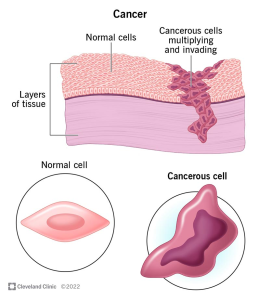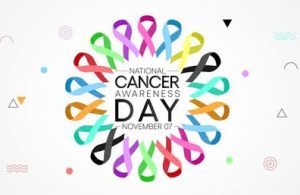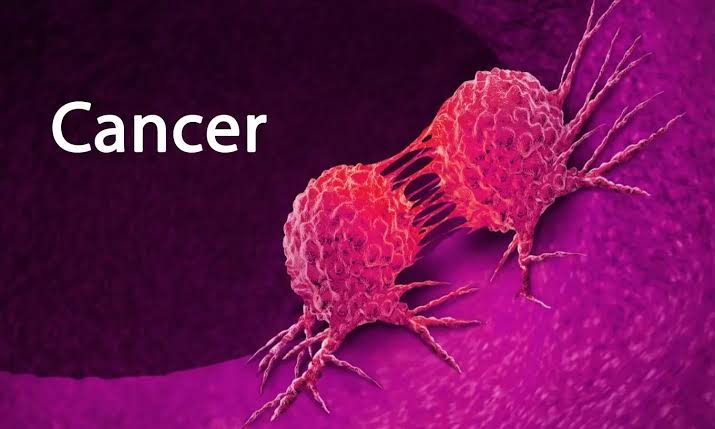Amidst the sterile white walls of the oncology unit, John’s journey began with a diagnosis that seemed insurmountable: stage IV cancer. Every scan and biopsy whispered tales of despair, yet within the labyrinth of fear, a glimmer of hope was kindled. Groundbreaking treatments, from immunotherapy to targeted radiation, became John’s arsenal. Each chemotherapy session was a battlefield, each pill a soldier in the fight. As months passed, the tumor markers fell, and the darkness that once loomed began to dissipate. John’s body responded with resilience, his spirit fortified by the unwavering support of his family and medical team. The once bleak prognosis transformed, revealing a horizon tinged with optimism.
Emerging from the shadow of illness, John found strength in the smallest victories: the return of his appetite, the laughter that punctuated his pain, and the joy of tasting his favorite meal once more. The journey was grueling, but with each treatment, a new chapter of survival was written. The resilience etched into his being became a testament to human endurance and the relentless pursuit of life. As John stood on the other side of his battle, cancer was no longer the emperor of all maladies in his life but a conquered adversary, vanquished by innovation, hope, and unyielding determination. His story became an inspiration, a beacon of possibility for others facing the same formidable foe.
“The Emperor of All Maladies: A Biography of Cancer” was written by Siddhartha Mukherjee.
What is Cancer
Cancer is a disease in which some of the body’s cells grow uncontrollably and spread to other parts of the body.
Cancer can start almost anywhere in the human body, which is made up of trillions of cells.

What is the difference between a normal cell and a cancerous cell?
Normally, cells follow instructions provided by genes. Genes set down rules for cells to follow, such as when to start and stop growing. Cancerous cells ignore the rules that normal cells follow.
Types of Cancer
1. Benign tumor/cancer
2. Malignant tumor/cancer
Benign Tumors
Benign tumors are those that stay in their primary location without invading other sites of the body. They do not spread to local structures or to distant parts of the body. Benign tumors tend to grow slowly and have distinct borders.
Benign tumors are not usually problematic. However, they can become large and compress structures nearby, causing pain or other medical complications. For example, a large benign lung tumor could compress the trachea (windpipe) and cause difficulty in breathing. This would warrant urgent surgical removal. Benign tumors are unlikely to recur once removed. Common examples of benign tumors are fibroids in the uterus and lipomas in the skin.
Specific types of benign tumors can turn into malignant tumors. These are monitored closely and may require surgical removal. For example, colon polyps (another name for an abnormal mass of cells) can become malignant and are therefore usually surgically removed.
Malignant Tumors
Malignant tumors have cells that grow uncontrollably and spread locally and/or to distant sites. Malignant tumors are cancerous (ie, they invade other sites). They spread to distant sites via the bloodstream or the lymphatic system. This spread is called metastasis. Metastasis can occur anywhere in the body and most commonly is found in the liver, lungs, brain, and bone.
Malignant tumors can spread rapidly and require treatment to avoid spread. If they are caught early, treatment is likely to be surgery with possible chemotherapy or radiotherapy. If the cancer has spread, the treatment is likely to be systemic, such as chemotherapy or immunotherapy.
Common early signs and symptoms of cancer in both men and women include:
1. Pain: Bone cancer often hurts from the beginning. Some brain tumors cause headaches that last for days and don’t get better with treatment. Pain can also be a late sign of cancer, so see a doctor if you don’t know why it’s happening or if it doesn’t go away.
2. Weight loss without trying: Almost half of people who have cancer lose weight. It’s often one of the signs that they notice first.
3. Fatigue. If you’re tired all the time and rest doesn’t help, tell your doctor. Leukemia often wears you out, or you could have blood loss from colon or stomach cancer. Cancer-related weight loss can leave you exhausted, too.
4. Fever. If it’s high or lasts more than 3 days, call your doctor. Some blood cancers, such as lymphoma, cause a fever for days or even weeks.
5. Changes in your skin. Have your doctor look at unusual or new moles, bumps, or marks on your body to be sure skin cancer isn’t lurking. Your skin can also provide clues to other kinds of cancers. If you notice skin changes such as darkening, a yellow or red hue, itching, increased hair growth, or an unexplained rash, it could be a sign of liver, ovarian, or kidney cancer or lymphoma.
6. Sores that don’t heal: Spots that bleed and won’t go away are also signs of skin cancer. Oral cancer can start as sores in your mouth. If you smoke, chew tobacco, or drink a lot of alcohol, you’re at higher risk.
7. Cough or hoarseness that doesn’t go away: A cough is one sign of lung cancer, and hoarseness may mean cancer of your voice box (larynx) or thyroid gland.
8. Unusual bleeding: Cancer can make blood show up where it shouldn’t be. Blood in your poop can be a symptom of colon or rectal cancer. Also, tumors along your urinary tract can cause blood in your urine.
9. Anemia: This is when your body doesn’t have enough red blood cells, which are made in your bone marrow. Cancers such as leukemia, lymphoma, and multiple myeloma can damage your marrow. Tumors that spread there from other places might crowd out regular red blood cells.
Prevention
1. Healthy Diet: Eat a balanced diet rich in fruits, vegetables, whole grains, and lean proteins. Limit red and processed meats, and reduce consumption of sugary drinks and highly processed foods.
2. Regular Exercise: Aim for at least 150 minutes of moderate aerobic activity or 75 minutes of vigorous activity each week, along with muscle-strengthening exercises.
3. Avoid Tobacco: Do not smoke or use any form of tobacco. Avoid secondhand smoke as well.
4. Limit Alcohol: If you choose to drink, do so in moderation. For women, this means up to one drink a day, and for men, up to two drinks a day.
5. Sun Protection: Use sunscreen with an SPF of 30 or higher, wear protective clothing, and avoid tanning beds. Seek shade during peak sun hours.
6. Vaccinations: Get vaccinated against hepatitis B and human papillomavirus (HPV), which are linked to liver and cervical cancers, respectively.
7. Avoid Risky Behaviors: Practice safe sex and avoid sharing needles to reduce the risk of infections that can increase cancer risk.
8. Regular Screenings: Follow recommended guidelines for cancer screenings, such as mammograms, colonoscopies, and skin checks, to detect cancer early when it is most treatable.
9. Know Your Family History: Be aware of your family’s medical history and discuss it with your doctor. Genetic counseling and testing may be recommended if there is a history of certain types of cancer.
Treatment for Cancer
There are many types of cancer treatment. The types of treatment that you receive will depend on the type of cancer you have and how advanced it is.
Biomarker Testing for Cancer Treatment
Biomarker testing is a way to look for genes, proteins, and other substances (called biomarkers or tumor markers) that can provide information about cancer. Biomarker testing can help you and your doctor choose a cancer treatment.
Chemotherapy
Chemotherapy is a type of cancer treatment that uses drugs to kill cancer cells. Learn how chemotherapy works against cancer, why it causes side effects, and how it is used with other cancer treatments.
Hormone Therapy
Hormone therapy is a treatment that slows or stops the growth of breast and prostate cancers that use hormones to grow. Learn about the types of hormone therapy and side effects that may happen.
Hyperthermia
Hyperthermia is a type of treatment in which body tissue is heated to as high as 113 °F to help damage and kill cancer cells with little or no harm to normal tissue. Learn about the types of cancer and precancers that hyperthermia is used to treat, how it is given, and the benefits and drawbacks of using hyperthermia.
Immunotherapy
Immunotherapy is a type of cancer treatment that helps your immune system fight cancer. This page covers the types of immunotherapy, how it is used against cancer, and what you can expect during treatment.
Photodynamic Therapy
Photodynamic therapy uses a drug activated by light to kill cancer and other abnormal cells. Learn how photodynamic therapy works, about the types of cancer and precancers it is used to treat, and the benefits and drawbacks of this treatment.
Radiation Therapy
Radiation therapy is a type of cancer treatment that uses high doses of radiation to kill cancer cells and shrink tumors. Learn about the types of radiation, why side effects happen, which side effects you might have, and more.
Stem Cell Transplant
Stem cell transplants are procedures that restore stem cells that grow into blood cells in people who have had theirs destroyed by high doses of chemotherapy or radiation therapy. Learn about the types of transplants, side effects that may occur, and how stem cell transplants are used in cancer treatment.
Surgery
When used to treat cancer, surgery is a procedure in which a surgeon removes cancer from your body. Learn the different ways that surgery is used against cancer and what you can expect before, during, and after surgery.
Targeted Therapy
Targeted therapy is a type of cancer treatment that targets the changes in cancer cells that help them grow, divide, and spread. Learn how targeted therapy works against cancer and about common side effects that may occur.
Prognosis
What are the cancer types prognosis?
Consider the examples below.
Lung cancer: 12 percent to 23 percent.
Female breast cancer: 75 percent to 91 percent.
Colorectal cancer: 50 percent to 65 percent.
Kidney cancer: 50 percent to 77 percent.
Leukemia: 34 percent to 66 percent.
Non-Hodgkin lymphoma: 47 percent to 74 percent.


